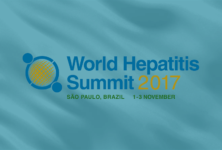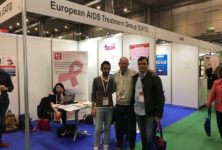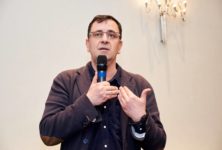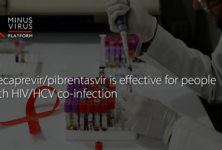Growing up in eastern Ukraine, Svitlana Moroz said she was a typically reckless teenager who believed she’d live forever.
She shared needles with friends to inject opium, had unprotected sex with a guy her own age, and five months after hooking up with him, learned she was five months pregnant and HIV-positive. He tested positive a week later.
It was 1998 and information in her native Donetsk was hard to come by. Before her diagnosis, the 19-year-old Moroz said she had only heard about AIDS in one biology lesson.
“My perception was that it was far from me, just in other countries,” Moroz said in Bangkok, where she spoke at a public health conference on a panel about people living with HIV.
“I heard a little bit from friends who used drugs, that more and more of them were diagnosed with HIV, but I was thinking, ‘I don’t use drugs so much. It’s only for those who did it every day.’”
Moroz is now a leading HIV activist in the Ukraine – an Eastern European country of 45 million people with one of the world’s fastest growing HIV epidemics.
It is home to about 220,000 people living with HIV.
Donetsk – an industrial city and key plank of Ukraine’s economy – has been an epicenter of the epidemic, with 671 people per 100,000 living with HIV – the third highest rate of prevalence in the country.
In the late 1990s, nine out of 10 new HIV infections in Ukraine were among people injecting drugs; injecting remained the main cause of new HIV cases until 2007, according to Unicef.
Since 2008, the primary route has been unprotected sex, said the Kiev-based non-profit Elena Pinchuk ANTIAIDS Foundation.
FACE BEHIND THE DATA
Moroz and her husband Oleksiy – the man she had first dated as a rash teenager – are the face of those statistics, yet they kept their HIV status secret until 2000, when they first met other people living with HIV in the capital, Kiev.
After that, she helped found two groups for people with HIV. They demanded healthcare for those denied treatment, helped people harassed by neighbors, and convinced small-town doctors of the benefits of antiretroviral treatment (ART).
“Many doctors discouraged our patients, telling them about huge side effects, that their liver will be destroyed,” Moroz said. “They were saying, ‘How do you know? I’m a doctor. What is your education?’” to which she responded, “‘Excuse me, I’m living with HIV. I have training.’”
Since 2005, she and her advocacy groups have helped Ukraine and regional government bodies to develop AIDS programs. And since 2013, she has coordinated action for the Eurasian Women’s Network on AIDS, a body spanning 11 countries in Eastern Europe and Central Asia.
LIFE – AND DEATH
Even though Moroz had no ART during her first pregnancy, she did not transmit the virus to her son. In the absence of intervention, mother-to-child transmission rates range from 15 to 45 percent, according to the World Health Organization.
Moroz started ART in 2004, six years after her initial HIV diagnosis, and in 2008, gave birth to a girl, also HIV-negative.
Then the family faced a whole new challenge – the anguish and disruption of war. Since fighting erupted between pro-Russia separatists and Ukrainian forces in Donetsk in 2014, Moroz said her life and family have been thrown into new tumult.
Her family has been displaced and now lives in Kiev.
Her husband Oleksiy, who enlisted with Ukrainian forces, was captured in August 2014 by Russian troops, handed to separatist fighters and freed four months later in a prisoner exchange.
“HIV and war brought us closer together,” she said. “We will never be the same again.”
By Alisa Tang


 ПОИСК ПО САЙТУ
ПОИСК ПО САЙТУ  поиск по ресурсному центру
поиск по ресурсному центру 



